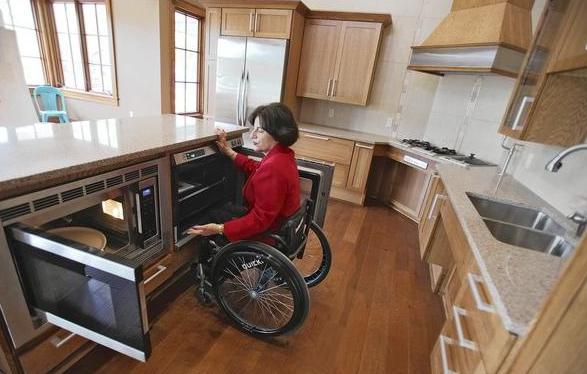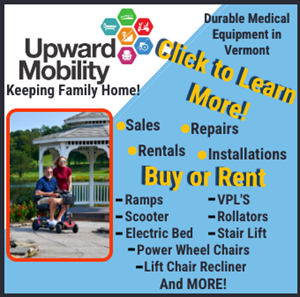
Experts in aging say most people want to live out their lives in the comfort of their own homes, or perhaps downsize to a residential community that takes care of chores like home and yard maintenance or provides supportive care as needed. In other words, they want to “age in place.”
Aging in place has become somewhat of a buzz-phrase in the world of senior services and advocates for the elderly. As average life expectancy creeps upward and the Baby Boomers reach retirement age and beyond, shifting demographics worldwide are focusing more attention on the enormous issues surrounding “eldercare.” Primary among them is how to ensure that older people have the support and services they need to maintain a good quality of life and remain vital, engaged members of their communities throughout the final years of their lives.
Vermont is no stranger to these issues. Like the rest of the nation and much of the world, Vermont’s population is shifting upward in age. By 2030, 24 percent of Vermonters will be age 65 or older, up from just 13 percent in 2006, according to U.S. Census data. There will be 91,000 more seniors in Vermont by 2030.
Vermont currently ranks as the second “grayest” state in the country, according to Sarah Lemnah, director of communications and development at Champlain Valley Agency on Aging.
Lemnah has been at the forefront of the state’s efforts to meet the needs of its aging population. Foremost among those issues, she said, is helping seniors to age in place.
“Almost all the seniors we work with want to stay at home. It’s their number one desire,” Lemnah said. “They want to stay connected to their community, they want to be independent, they want their privacy and they don’t want to give that up.”
When faced with a medical issue such as a broken hip or a minor stroke, Lemnah said the first question seniors typically ask is “Can I stay at home?”
Fortunately, she said, Vermont has a lot of programs and support services in place to help them do just that. Vermont ranks second in the nation for healthiest state for older adults, according to a 2013 report from United Health Foundation, in part because of the services that are available here. Affordable and appropriate living environments are critical, and can help seniors stay healthier longer.
The cost of nursing home care – much of which is paid for by the state Medicaid program – is one incentive for putting systems in place that help people age in place. In 2006, the average annual cost of staying in a nursing home was $73,730, according to a MetLife survey of nursing home and home-care costs, and is projected to increase to more than $109,000 per person by 2030. State-run Medicaid programs pick up the bulk of the tab for low-income people.
“It’s cheaper to keep someone at home longer than to pay for nursing home care,” Lemnah said, a financial fact that has helped fuel Vermont’s efforts to provide alternatives.
In 2005, Vermont won Federal approval for a Medicaid waiver program called Choices for Care, whose goal is to give low-income seniors more options to age at home or in supportive living situations other than nursing homes. In effect, it turns federal Medicaid funding for long-term care (including both nursing home care and home care) into a block grant for the state, giving the state more flexibility in how it uses those federal dollars. Vermont is aiming for a balanced system where 40 percent of people eligible for Choices for Care programs receive services through home- and community-based systems and no more than 60 percent are placed in nursing homes.
Achieving that goal not only requires that more nursing home alternatives are available – be they Residential Care Homes, which typically assist seniors with personal care and activities of daily living, or Assisted Living residences that offer apartment-style housing with nursing-home level care when needed – but also a litany of services to support seniors in maintaining independence. These range from transportation for older adults who can no longer drive (a big issue in rural areas where public transportation is lacking), to providing home healthcare services, to “cash and counseling” programs that work with seniors to develop spending plans for purchasing services and goods that help them stay at home.
Sometimes, simple home-design measures can make all the difference in whether or not an older adult can continue to live at home. Home builder Tom Moore, president of Tom Moore & Sons of Underhill, a Certified Aging in Place Specialist (CAPS), advocates universal design for all homes, regardless of the age of the inhabitants. Universal design incorporates elements such as wider doorways and hallways that are wheelchair accessible, walk-in showers, ground-level entrances without stairs, and similar features that allow people to continue to function in their homes even if they become disabled. Some are simple changes – lever-type door handles rather than knobs, for example, or safety bars on tubs – that, if incorporated into the design and building of a home from the beginning, barely impact building costs, Moore said.
Older adults who are interested in buying a new home, as well as people who plan to stay in their home into old age, should be looking for these kinds of design elements, said Liz Merryman, a Chittenden County Realtor who has been accredited as a “Senior Specialist” by the National Association of Realtors. The accreditation includes training “to talk to people about aging in place and look at the changes that need to be made to a home to make that possible,” Merryman said.
“It makes common sense,” said Moore. “If you can keep people in their homes longer, they’re going to be happier and live longer.”
This article was contributed by Brenda Patoine
 Related Articles & Free Subscription
Related Articles & Free Subscription
Aging in Place Through Universal Design



Comment here